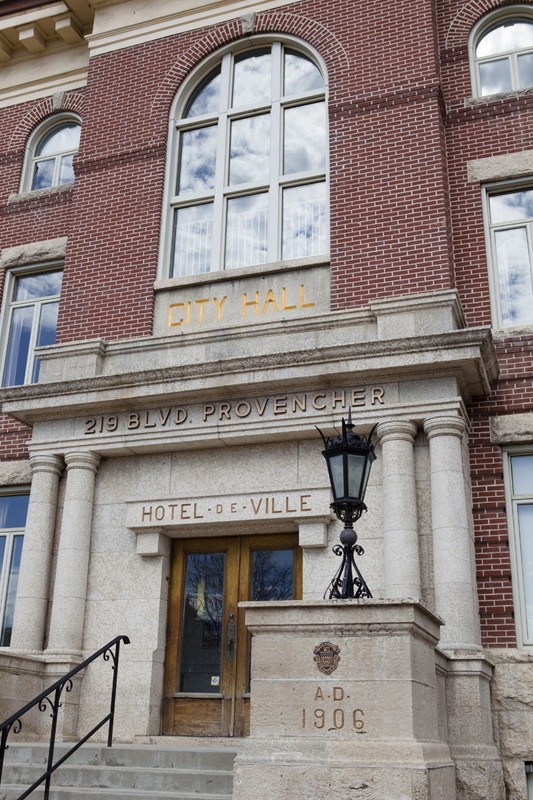Forty years after its inception, Unicity is generally considered a noble failure
A person born in the 1990s will be forgiven if they are unfamiliar with the fact that the city in which they currently reside is not the same one that existed prior to Jan. 1, 1972.
On that date, provincial legislation amalgamated 13 formerly independent municipalities to form the city of Winnipeg in which we live today - an entity known as Unicity.
However, for most students at the University of Winnipeg, the term “Unicity” is probably chiefly known as the name of a prominent taxicab company and a shopping mall, rather than a bold concept in urban governance.
This obscurity is not merely a function of the term being 40 years old this year, but also relates to the fact that most of those features that made it such an important and innovative experiment in urban governance have long since withered away through design or neglect.
For a dozen years prior to Unicity, Winnipeg functioned under a two-tier system of governance known as the Metropolitan Corporation of Greater Winnipeg (or Metro for short), in which Winnipeg and the 12 other municipalities (St. James, Assiniboia, St. Boniface, Transcona,
St. Vital, West Kildonan, East Kildonan, Tuxedo, Old Kildonan, North Kildonan, Fort Garry and Charleswood) each managed their own affairs, levied their own taxes and held responsibility for local roads, water and parks.
However, an additional metropolitan level of government existed above all of these, and held responsibility for planning major roads, major water and sewer systems and major parks.
Between them, these levels of local government paid the salaries of no fewer than 112 councillors.
This arrangement was, as one could imagine, incredibly unwieldy.
Planning any infrastructure (like a road) that would cross from one municipality to another not only required those councils to agree to it, but was also fraught with disagreement over what constituted a major road or a local one.
The Unicity model not only sought to streamline and coordinate decision-making over such matters, but was imbued with very progressive goals, such as empowering residents and diminishing the distance between them and their government.
Unicity’s council was composed of an astonishing 50 seats, and councillors worked not only with a board of commissioners, but 13 community committees with decision-making powers, as well as resident advisory groups (RAGs).
Significantly, Unicity equalized mill rates, with the view to preventing the kind of spatial inequities seen in so many American cities, where suburbs are able to lure away businesses and households from urban cores with more favourable tax regimes and better-funded schools.
It also aimed to control outward expansion of the city by eliminating the fragmented planning of Metro.
If all of this sounds unfamiliar, that’s not surprising.
The progressive and democratizing functions of Unicity were short-lived: over the years, successive “reforms” have seen council whittled down to its present 15 seats (with correspondingly larger wards)
the 13 community committees reduced to a mere five and the RAGs and the commissioners eliminated - the former apparently for lack of interest on the part of residents.
At the same time - and over successive administrations - more authority has been vested in the Mayor’s Office.
Since suburban interests ended up dominating council, the equalization of tax levies did little to steer investment into the inner city.
As well, far from containing urban growth, Winnipeg’s council lost any planning authority over the former “additional zone” on the periphery so that the same patterns that prevailed under Metro - competition and fragmentation - are now repeated on a regional scale.
Unicity also did little to diminish the social, economic, racial and cultural fragmentation of the city, which makes addressing inner-city poverty and marginalization such a challenge.
On a larger scale, neither Unicity nor the City of Winnipeg Charter Act (2002) appear to have facilitated more harmonious relations with the province, to which the ongoing battle over funding the expansion of rapid transit attests.
Taken together, it is unsurprising that Unicity is generally considered a noble failure by pretty much all observers, and across the political spectrum.
Perhaps it was too grand and complex a model for such a modestly populated city
or perhaps it was too much to expect that a century of inter-municipal fragmentation and disparities could be legislated away.
Maybe several more decades are needed before Winnipeggers overcome this history and think of themselves as residents of one city, instead of one of its constituent parts.
Clearly, the governance of Winnipeg is a work in progress.
If nothing else, the legacy of Unicity may be that urban governance should be seen as a matter worthy of experimentation, rather than adhering to a status quo - and that further experimentation is not only possible, but necessary.
Michael Dudley has a Master of City Planning from the University of Manitoba. He is the senior research associate and library coordinator at the Institute of Urban Studies at the University of Winnipeg.
Published in Volume 66, Number 26 of The Uniter (April 5, 2012)







